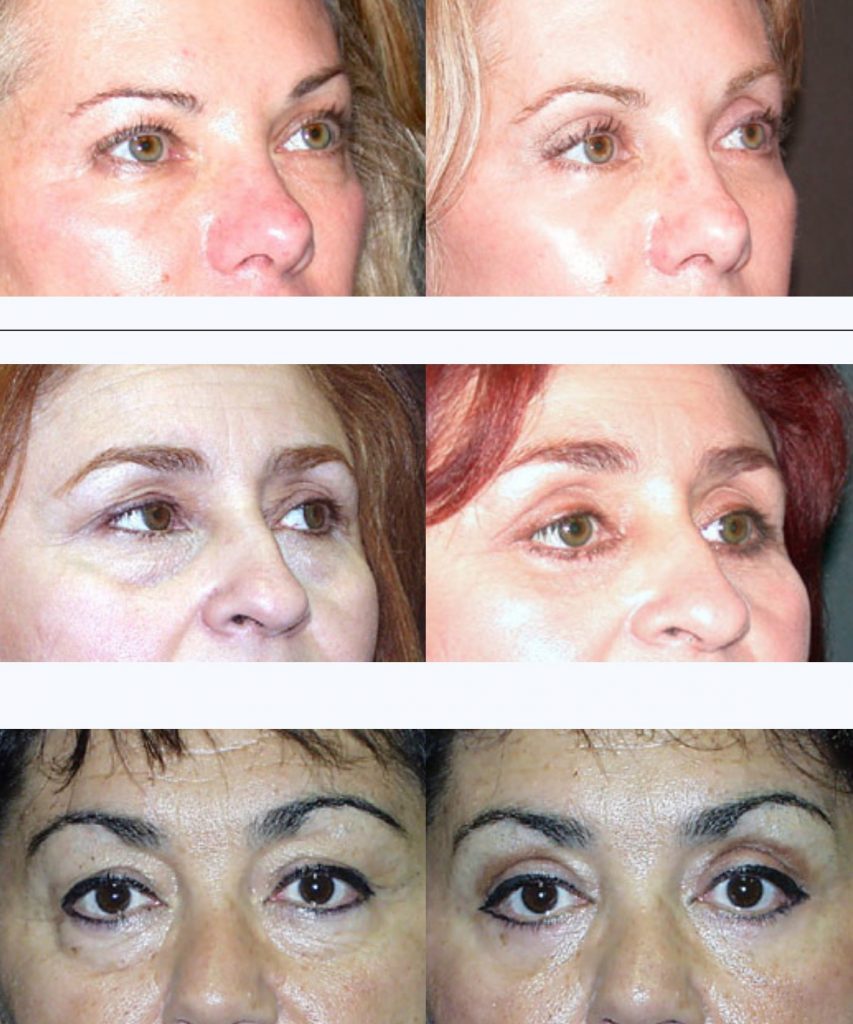
Actual patients
Blepharoplasty: Eyelid Lift Orlando, FL | Altamonte | Lake Mary | Winter Park
Blepharoplasty (Eyelid Surgery) Lift Orlando, FL | Altamonte | Lake Mary | Winter Park
Upper Eyelid Lift Surgery (Blepharoplasty) & Lower Eyelid Lift Surgery in Orlando, Florida
What is Eyelid Lift Surgery for Excess Skin?
The eye area is one of the first areas of the face to show signs of aging. This procedure is particularly effective for correcting drooping eyelid skin, a common concern as we age. An eyelid tuck, or “blepharoplasty” can be used to restore the youthful look of the eye area. Blepharoplasty surgery can be performed on either the upper or lower eyelids – or both. Upper lid surgery usually addresses sagging eyelid skin. Lower lid surgery often focuses more on prominent fat pads, as well as excess skin.
It may be safely combined with a facelift, chemical peel, laser resurfacing or a forehead lift if needed, depending on your individual situation. Sagging skin, resulting from a loss of elasticity, can be aesthetically displeasing and can even impair vision in more severe cases, making blepharoplasty a valuable option.
Sometimes, additional procedures are needed for special cases – where the upper or lower lid is droopy or incorrectly positioned.
Dr. Fiala will carefully look at your eyelid anatomy, analyzing it for sagging eyelid skin, fat deposits, asymmetries, and lower lid support. Based on this, they’ll recommend some options for the upper and lower lids. Some of these may involve traditional surgery; other options include chemical peels, fractional laser resurfacing, RF- microneedling, and injectables. Moreover, sagging upper eyelids not only affect appearance but can also obstruct peripheral vision, necessitating surgical intervention.
Candidates for Eyelid Surgery with Sagging Skin
Most blepharoplasty patients are in their 40’s or 50’s, but sometimes patients in their late 30’s have the procedure done if they have the early appearance of droopy eyelids or prominent bags under the eyes. This may be a characteristic family trait. Patients should be healthy, have realistic expectations, and not have any major diseases of the eye.
Treatment
In upper eyelid surgery, the surgeon first marks the individual lines and creases of the lids in order to keep the scars as invisible as possible along these natural folds. Care is taken to map out the excess skin accurately, prior to surgery. After the patient is asleep, the incision is made, and excess fat is removed, and then the loose skin is removed. Fine sutures are used to close the incisions. Incisional scars usually heal very well and are barely visible after healing. In cases where eyelid ptosis is due to brow ptosis, a brow lift may be recommended to achieve the desired aesthetic and functional outcome.
Blepharoplasty surgery can be performed on the upper and lower eyelids, each requiring specific surgical techniques tailored to the patient’s needs. For lower eyelid surgery, there are several options, depending on the patient’s anatomy. If we feel there are fatty pockets to be removed, we will typically use a “trans-conjunctival” approach to the fat. This uses an incision on the backside of the eyelid and no external scar. If we feel there is extra skin on the lower lid, then a “skin-pinch” style approach to remove this skin is typically performed, just beneath the eyelash area. The scar typically also heals very well. These two approaches can be combined to deal with combinations of extra fat and loose skin.
For the upper lids by themselves, we give patients a choice of having it done with a light general anesthesia or IV sedation by an MD anesthesiologist. If the lower lids are being treated, usually general anesthesia is preferred, also under the care of one of our expert MD anesthesiologists. While lower eyelid surgery rarely needs to be repeated, it is crucial to follow post-operative care instructions to maintain long-term results.
Recovery from Upper and Lower Eyelid Surgery
For most people, it’s an easy recovery, with minimal pain, and minimal bruising and swelling. Cool compresses are helpful for the first 2-3 days to minimize swelling. Most people are back to their normal activities after about a week and can return to the gym or other physical activities by 3 weeks after surgery. The incisions typically heal very nicely, and are invisible at conversational distances by 3 months after surgery, on average. Patients who require a canthopexy typically have more swelling, so their recovery may take a little longer. The eyes tend to feel dry for several months afterwards, so liberal use of artifical tears is recommended during this early recovery time period.
